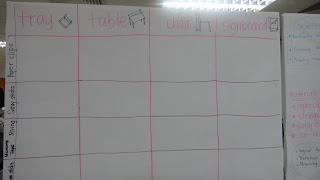 High-tech. That is how I would describe our nation and especially so the new-age kid. Technology is everywhere these days that you will have to travel to the Sahara Desert to evade this powerful tool.
High-tech. That is how I would describe our nation and especially so the new-age kid. Technology is everywhere these days that you will have to travel to the Sahara Desert to evade this powerful tool.
e) Chapter 7
Calculators were a great help to me back in school days. I had a good trust in calculators and relied on them to provide me with the exact computation. I also liked calculators because it ended the nagging routine of school and tuition teachers who kept saying that I was guilty of making careless mistakes in my calculation.
In this chapter, we can read about the benefits of the use calculators that contribute to the learning of mathematics. I was amazed with what calculators can do in a child’s learning! Though calculators are commonly used in society, I assume that early childhood educators have never really brought it into their classrooms. After reading this chapter, I am convinced that it is a good tool to introduce at preschool level. While experiences with concrete materials are primary for young learners, calculators can also serve to be concrete as a tool that can enhance conceptual understanding, strategic competence, and disposition toward mathematics. I also agree with the authors that effective use of calculators is an important skill that is best learned by using them regularly in meaningful problem-solving activities.
For one of my assignments for the IT module back in poly days, I had to design a software for preschoolers. I recall designing an interactive math game, where I ensured that it incorporates math concepts, problem solving, and other skills (eye-hand coordination, etc) catering to a selected age group. As much considerations and thought goes into designing such software for preschoolers, I think the same applies for selecting them for application. There are numerous software and internet resources available, but it is the responsibility of educators to ensure that those selected are challenging, age and level appropriate, and meet the objectives of the lesson.
Teacher Resources
I especially liked the following websites:
1. NCTM Illuminations
There are some really cool activities that anyone young and old can try. So I indulged myself with those activities…. I thought that this proved very well that such mathematics games will allow children to engage in resolving, concentration, the use of a variety of strategies, imagination, and creativity. This website did not disappoint.
2. The Math Forum
Various activities catering to different age and complexity levels. Very useful for teachers' resource in designing their lesson plans too!
----------------------------------------------------------------------------------------------------------------------------------------------------------------------------
My centre very recently purchased this thing called the “Portable Interactive White Board” that enables interactive teaching from anywhere in the classroom. It is to be used with an electronic pen (e-Pen), and interact with software applications simultaneously. My objective in making this purchase was so that my teachers can bring technology closer to our students, and of course, to make learning much more fun. However, I can foresee that I may have difficulty in getting teachers of the mature age to embrace this new technology. As it is, they are trying to cope with the conventional use of IT in children’s learning. It will take a lot from this self-declared “IT-idiot” to make this change.
Qsn: How do I change the mindset of early childhood educators who are afraid or not very willing to embrace new technology?






